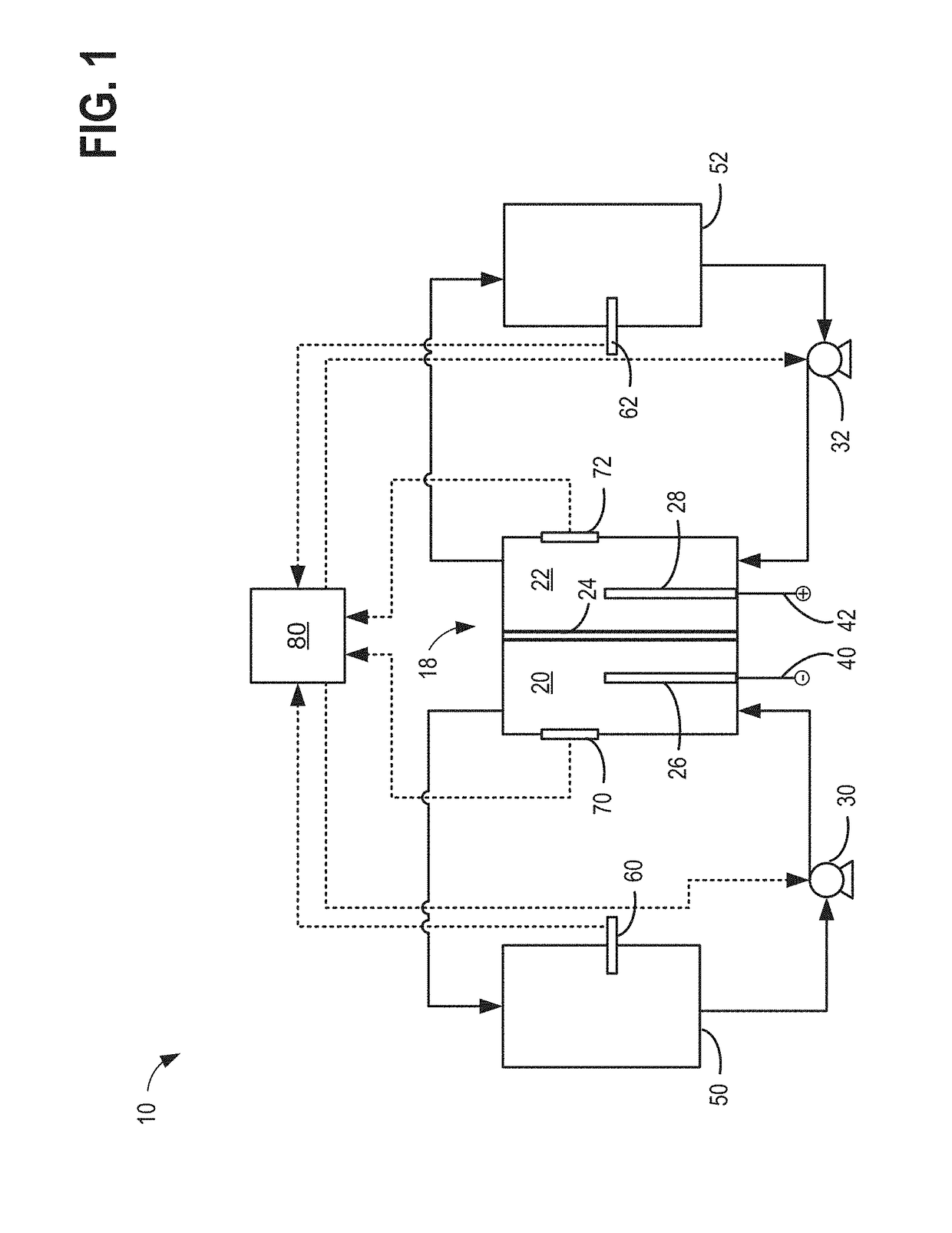Method and system to maintain electrolyte stability for all-iron redox flow batteries
a technology of redox flow and electrolyte stability, which is applied in the direction of regenerative fuel cells, fuel cells, electrical equipment, etc., can solve the problems reducing the battery capacity loss, and deleting the performance of an ifb battery, so as to minimize these side reactions and reduce the overall battery efficiency , the rate of reaction (3) and (4) is slow, and the effect of reducing the overall battery efficiency
- Summary
- Abstract
- Description
- Claims
- Application Information
AI Technical Summary
Benefits of technology
Problems solved by technology
Method used
Image
Examples
Embodiment Construction
[0023]The present description relates to methods and systems for redox flow batteries. The methods and systems provided maintain electrolyte stability through pH and species control in the redox flow battery system. Redox flow battery systems, illustrated in FIG. 1, utilize a reversible chemical reaction to store and release energy. An example of a redox flow battery is an all-iron hybrid redox flow battery (IFB) which utilizes electrochemical reactions involving iron ions, illustrated in FIGS. 2A, 2B, and 3. During operation of redox flow battery systems, side reactions may be present which affect the operation parameters of the battery and may decrease the efficiency of the system. An electrochemical cell, herein also referred to as a rebalancing cell, illustrated in FIG. 4, may be included in a redox flow battery system, illustrated in FIGS. 5, 6, and 7. The electrochemical cell may be used during specific conditions within a redox flow battery system, illustrated in FIG. 10, to ...
PUM
| Property | Measurement | Unit |
|---|---|---|
| pH | aaaaa | aaaaa |
| pH | aaaaa | aaaaa |
| stability | aaaaa | aaaaa |
Abstract
Description
Claims
Application Information
 Login to View More
Login to View More - R&D
- Intellectual Property
- Life Sciences
- Materials
- Tech Scout
- Unparalleled Data Quality
- Higher Quality Content
- 60% Fewer Hallucinations
Browse by: Latest US Patents, China's latest patents, Technical Efficacy Thesaurus, Application Domain, Technology Topic, Popular Technical Reports.
© 2025 PatSnap. All rights reserved.Legal|Privacy policy|Modern Slavery Act Transparency Statement|Sitemap|About US| Contact US: help@patsnap.com



